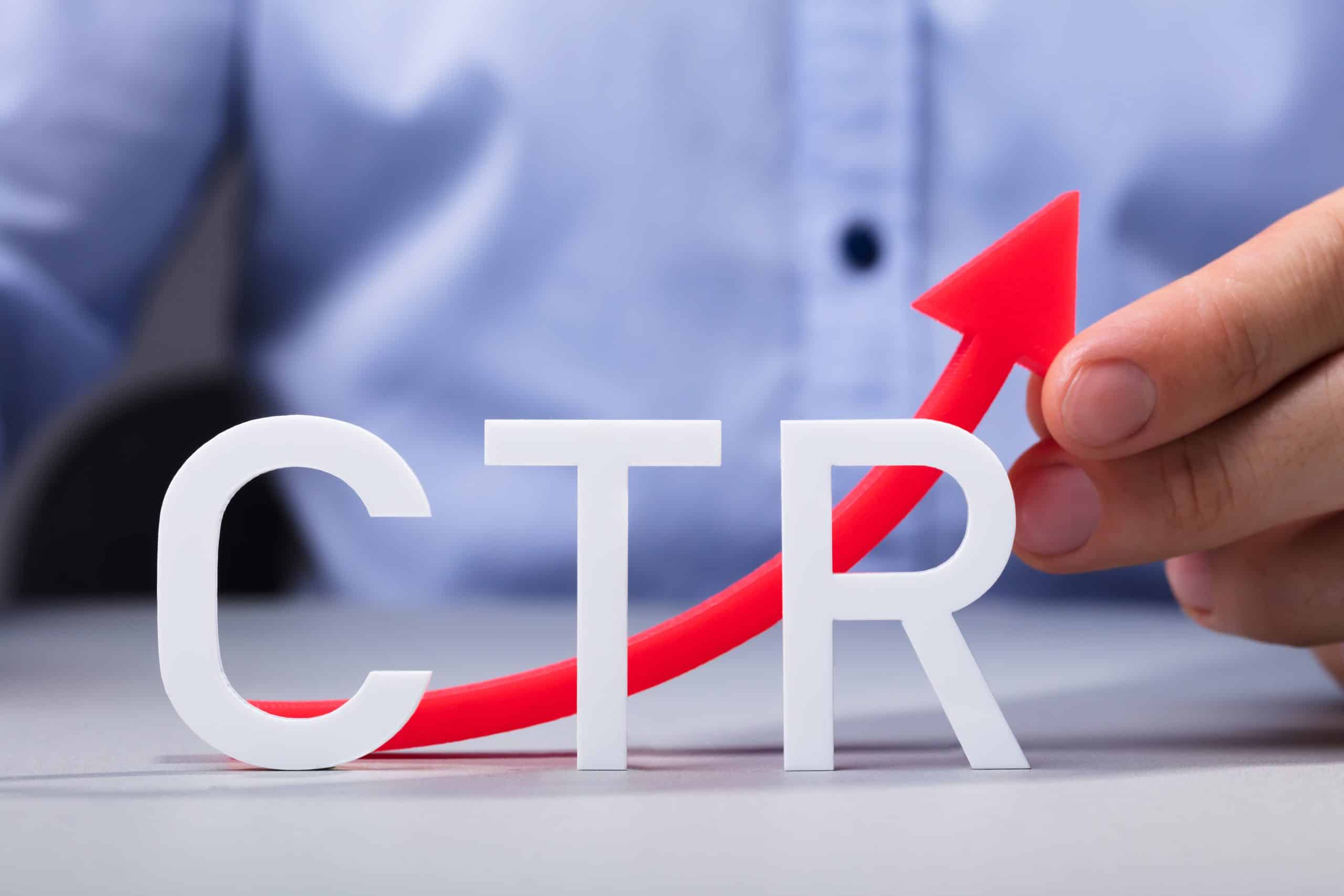Let’s take a quick step back in time, all the way to the wild days of 2016. That was the year, according to The Guardian, that mobile web browsing overtook desktop browsing for the first time. In many ways, we’ve never looked back.
Instead, advertisers should look forward: In an ever-changing digital world, one constant is that marketers need to reach potential customers if they want to drive brand awareness and score sales. In the distant, ancient past, when all online activity was conducted on desktop computers (or laptops — I’ll be using the term desktop or simply “computer” as a catch-all), digital marketers could focus on placing ads on websites, applying SEO tactics that would drive search engine results, and focus on various types of content placement, from popups to banners to advertisements on the margins of webpages.
In our mobile-dominated era, marketers need to be more dynamic and flexible in their traffic buying, because mobile devices simply get more usage than computers. Here’s what you should need to know about desktop vs. mobile usage in 2025.
Desktop vs. Mobile Experience
The difference between desktop vs. mobile usage is, of course, driven by behavior.
Most people use their phones for quick tasks, like researching a product’s price, scrolling social media, getting directions, or checking the weather, email, or texts. Mobile usage these days reflects the speed of modern life: People are used to instant information and content loading fast. However, mobile usage is usually characterized by shorter attention spans. According to Databox, 70% of the time, the average mobile session is a mere 3.5 minutes. The smaller screen size and tendency to be doing ten things at once with phones means users are less likely to conduct thorough research or browse multiple pages in one session.
Desktop usage, though it accounts for less and less overall traffic, continues to dominate in certain areas, especially when online transactions involve higher-value purchases or more complex research. This use case is rooted in how people process and act upon information. Larger screens, stable internet connections, and rapid load times make it easier to review more complex information, switch between tabs, and study images or watch videos.
Desktop users also tend to feel more secure entering payment information or uploading other sensitive documents into what they feel is a stable platform, which is important for transactions that involve large investments, according to Quartz. Furthermore, desktop sessions are usually longer because people tend to use desktops in places that allow for more attention, such as a dedicated workspace or home office.
Desktop vs. Mobile Usage Statistics for 2025
As noted, late 2016 saw a shift in the way the world goes online. It was during that fall that mobile usage surpassed desktop usage for the first time, and the trend has only continued in that direction. At last check, in the midsummer of 2025, approximately 64% of global web traffic is accounted for via mobile devices, meaning smartphones in particular, while 36% is accounted for by computers — and about 2% is accounted for by tablets, according to data from DigitalSilk.
Although people are using mobile devices to go online more often than they use traditional computers, desktops still have plenty of clout with users. When we consider in-depth research and high-value online actions, such as researching and making an offer on a car, or booking a vacation, for example, desktops still play a significant role, as people tend to spend more time per visit and view more pages per session on desktop devices compared to mobile. Per Semrush, in 2023, the average visit duration was almost 38% longer on computers than on a mobile device, and people viewed about twice as many pages per visit.
Desktop vs. Mobile Historical Usage Statistics
We know that 2016 was when mobile usage surpassed desktop usage for the first time, but it’s informative to look a bit farther back to show how significant the change was. Per data sourced from MobiLoud.com, in the year 2015, desktop usage still had a notable lead over mobile, at nearly 60% versus just over 35% for mobile usage. That means things changed precipitously and fast. (Note that these data exclude the use of tablets, focusing just on mobile smartphones.)
Want more evidence? Look just a few years earlier: In 2013, desktop usage accounted for a staggering 79% of all usage. It’s remarkable, really, that in about a decade since the mobile overtaking, as it were, there has been an almost even flip, with mobile now accounting for about two thirds of online usage and desktop for the remaining one third of usage, give or take.
User Engagement Signals
Smartphones may ostensibly be handheld computers with many of the same capabilities as regular computers, but how people use mobile devices vs. desktops is actually quite distinct, and marketers looking to effectively buy traffic — which means placing ads, paid search results, and the search-engine optimization of content — need to understand the difference.
Desktop and laptop computers are a better interface for many tasks because users can easily switch between websites and applications, and because they have faster and more reliable processing power, per Research. You can be working on large files and go between a lot of website page tabs at once. The big screen of a full-sized computer can help you focus for longer, as can the full-sized keyboard and the haptic response of using a mouse or trackpad.
On the other hand, the great thing about smartphones is how convenient and easy to use they are. You can check your texts, read and reply to your emails, and look over things like an analytics report at any time with just a glance at your phone.
The different ways of using desktop vs. mobile are shown in several key engagement indicators, including:
Bounce Rate
Mobile users, on average, have a higher bounce rate than those on desktops, per Semrush, Bounce rate is the percentage of visitors to a site who navigate away after viewing only one page. This can be demonstrated clearly through online shopping, for example.
Shopping behavior reflects certain clear differences. Mobile shopping is often about convenience; users will grab their phones to make a purchase while waiting in line or during commutes, spending money at times they would never have even been able to before.
Conversely, desktops are used more for deliberate actions, such as crafting an itinerary for travel, analyzing financial data, or writing product reviews. Interestingly, many users will start their online processes on mobile but switch to desktop for the closing steps, especially when enhanced security or attention to detail is important, or when anything like a large sum of money is involved.
Session Duration
Desktops are for bigger projects that require more focus. People use them to play involved online games, to work on important projects like architectural design or film editing, for writing a term paper or major work memo, or for researching expensive items before making a purchase.
Mobile, however, is all about speed and ease. It’s where people scroll through social media, shop quickly for affordable or everyday items (re-ordering cat litter on Amazon, for example), or play basic games when they’re killing time.
On average, overall, people spend more time on sites and pages when on a computer, and this allows for advertising that’s more in-depth, such as long form videos, more written copy on static ads, interactive carousel-style posts, etc.
Conversion Rate
Conversion rate is a stat measuring how effectively a site or an app converts visitors from leads into actual customers (or subscribers, members, and so on). A conversion is an action the marketer hopes a user will take, be it a sale, a signup, or a follow. It’s calculated by dividing the number of conversions by the total number of visitors (or sessions). Generally, per Alpha Efficiency, desktop conversion rates are higher than mobile conversion rates, which is true for several reasons, including that basic fact of larger screen sizes, but also very much a factor of the mindset of the user.
Mobile users are much more likely to bounce around quickly based on attention span or interruption, to be doing several things at once, or to be browsing without much of a plan in mind. At times when people are working, computer sessions tend to be longer, since computer users are performing more complex or in-depth tasks.
That said, overall, there are many more people using mobile than there are using desktop, so even if the conversion rates are lower on a case-by-case basis, mobile still has massive potential for driving conversions since it casts a wider net.
Desktop Usage Advantages and Disadvantages
As mentioned, desktops make it easier to focus, because of that larger screen size, the keyboards, and the mouse or trackpad interaction. They also allow users to work on complex tasks, as one can easily toggle between different tabs and windows, can have multiple documents, spreadsheets, and other files open, and can use that trackpad or mouse (or even a large touchscreen in some cases) and often with two or more monitors in play.
The most obvious drawback to using a desktop is that it’s not conveniently mobile. Even a laptop is not a truly mobile device, in that you don’t use it while walking down the street or standing on the train or bus, so you’re somewhat tethered down when using a computer.
Mobile Usage Advantages and Disadvantages
The biggest advantage of mobile is the sheer number of people using mobile devices, and the amount of time they spend on them per day. The smaller screens of mobile devices limit the types of content marketers can place on mobile, though, and as noted, the bounce rates are higher and the conversion rates lower. Still, the wide range of media people can access on mobile — from social media sites and games to video content and text, email, and apps — can compensate somewhat, as can the ubiquity of usage.
Key Takeaways
When it comes to weighing desktop vs. mobile usage in your advertising decisions, there isn’t a right or wrong answer between the two: You should simply be clear on which option is better for driving the conversions and engagement you seek. More people are indeed going online via mobile devices at present, but on average users spend more time — and more actionable time, for the record — when on a desktop, so do not assume more quantity means more quality when planning your marketing budget.
Frequently Asked Questions (FAQs)
What percentage of internet traffic is mobile?
Mobile devices accounted for 64.35% of global web traffic as of the summer of 2025, according to data sourced from SOAX.
What is the bounce rate of mobile vs. desktop usage?
According to most available data, mobile devices generally have a significantly higher bounce rate compared to desktop computers. Studies often show a mobile bounce rate around 50-60% while desktop bounce rates are closer to 30-40%.
Do people shop more on desktop or mobile?
People generally shop more on mobile devices, but more expensive purchases, such as for a designer item or a pricey plane ticket, are made on computers. So in terms of dollars, the division is not so clear-cut.
What percentage of Google searches are done on mobile devices?
Per data from Semrush, as of July 2025, 63% of Google’s organic search traffic in the United States came from mobile devices.
Why does mobile-first indexing matter for SEO?
Mobile-first indexing makes it more likely that a page or site pops up on a mobile device, but the benefits of mobile search engine optimization (SEO) go beyond just generating more traffic from mobile searches — it also improves the overall experience for users. This can lead to more conversions and can keep users more engaged with a site.



